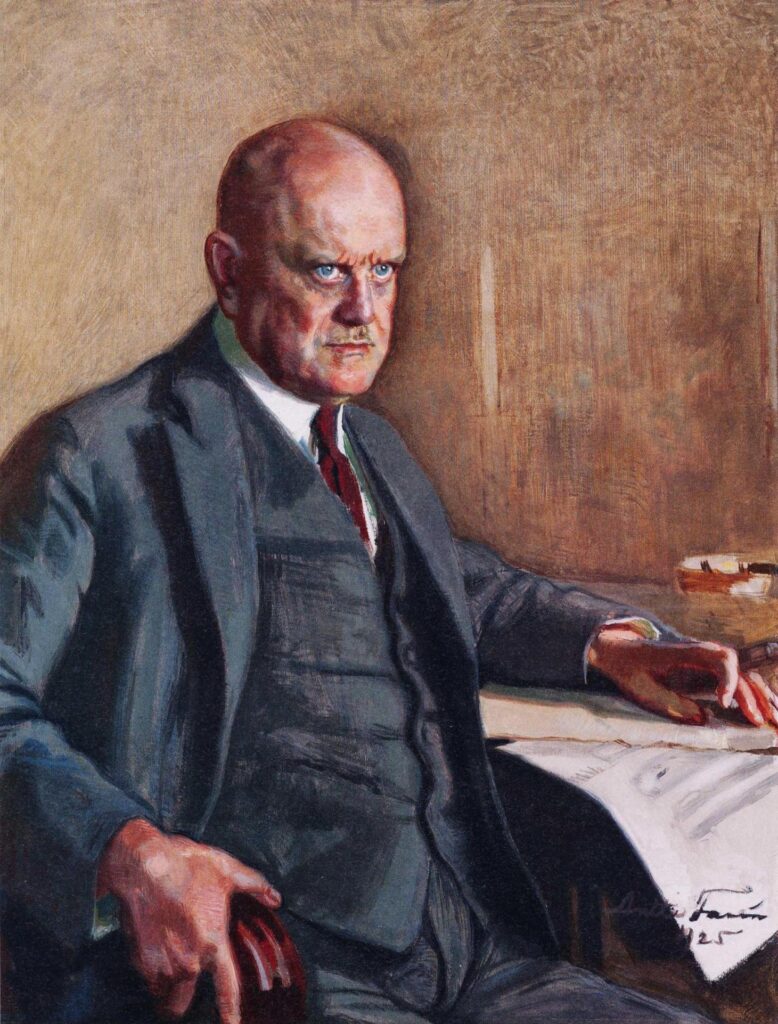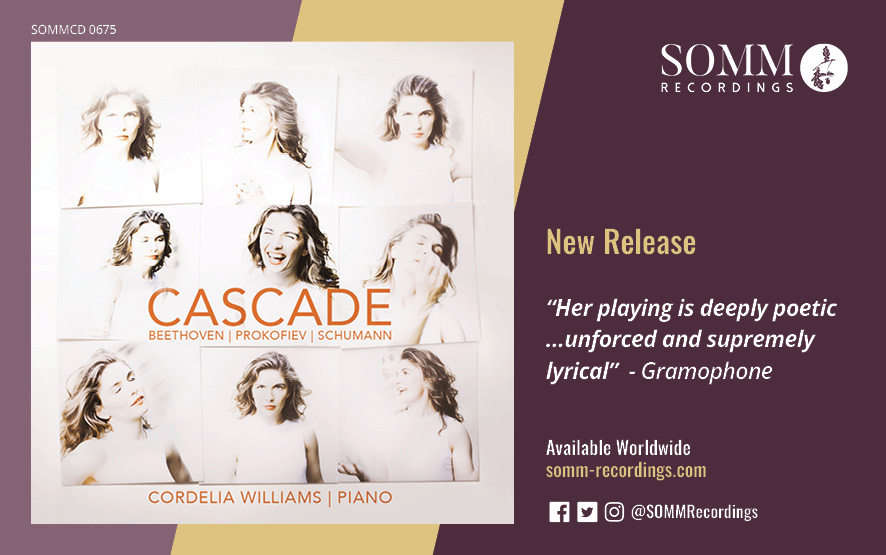Endnotes, September 2023

Jean Sibelius by Favén (1925), credit Wikimedia Commons
In this edition: Walton in Mediterranean mood; Sibelius in Nordic splendour. Plus, Bach sonatas and a Russian romantic masterpiece. Reviewed by Stuart Millson
On August 3rd, The Quarterly Review was at the Royal Albert Hall for a Proms concert of Walton and Sibelius, given by the BBC Philharmonic Orchestra under its Finnish conductor, John Storgards. The works of the maestro’s great countryman, Jean Sibelius, have greatly enriched the Chandos CD catalogue in recent years, with the Storgards/BBC PO cycle of symphonies garnering much critical approval. And a special sound from this partnership has also emerged, transferring to an equally memorable Carl Nielsen cycle: a velvety sound, with prominent, sometimes rugged brass, and superb attention to tiny detail ~ particularly woodwind writing.
The audience could hear ‘in the flesh’ that brilliant recording-studio/broadcast-orchestra sound ~ the Albert Hall stage and acoustic, doubling that intensity. Storgards carefully shaped a ‘spotlight sound’, meaning that each wind instrument, each pluck of a harp-string, gained prominence and attention. About five minutes into the Sibelius Symphony No. 1, after the immense initial symphonic argument and establishment of a theme, a contrasting delicate ‘dance’ appears, involving flutes, woodwind and harp; a fleeting, sparkling moment, before an angry section on timpani breaks the idyll.
A pizzicato passage then takes root, building up with glimpses of strange forest light ~ cellos and basses thrumming, as flute and clarinet phrases tumble and whirl. Critics often remark on the Tchaikovsky-like quality of Sibelius’s two early symphonies ~ big tunes, Russian-sounding romanticism ~ and yet, appearing out of the mists, comes the pure, Nordic Sibelius who would go on to give the world masterpieces such as the Fifth and Sixth symphonies and En Saga.
Storgards and the BBC Philharmonic are versatile musicians and seemed just as at home, bathed in the Neapolitan warmth of William Walton’s 1939 Violin Concerto, for which they were joined by Canadian-born soloist, James Ehnes, whose playing captured the work’s mixture of intense lyrical yearning, and shadowy, jabbing ‘malizia’. The latter sensation in the second movement ~ a take on a Neapolitan-type tune, perhaps heard in a cafe or club ~ creates an image of night-time harbour-lights, dark streets, intrigue. Yet at times, Walton appears to be looking over his shoulder back to England and the muscular, impetuous lyricism of Elgar’s own concerto for the instrument, with which this 1939 work stands shoulder-to-shoulder.
However, there was one incongruous element in the concert: the ten-minute world premiere of Kafka’s Earplugs, composed by Gerald Barry, whose programme note referred to the Czech writer’s obsession with noise and “hiding from it”. The BBC commissioned this work. One promenader was evidently not impressed and shouted out ‘Total rubbish!’ at the end.
Next, to a recording made at St. John’s Baptist Church, Loughton, Essex, of the Sonatas for Violin and Harpsichord by J.S. Bach (1685-1750). Performed by violinist Adrian Butterfield and harpsichordist, Silas Wollston, the disc offers followers of the baroque/early-classical period an absorbing hour of the great German composer’s harmony and invention; music that filled Lutheran churches and stately homes in Brandenburg ~ music that because of its beauty and relentless complexity, could almost go on forever. Yet here we find Bach with a more human face: the genius behind the Passions and B-minor Mass even finding it possible to enter into a playful mood.
The CD sleeve notes quote the following letter from Bach’s son, Carl Philipp Emmanuel, to his friend, Johann Nicklaus Forkel:
‘In somewhat of a rush, I have pleasure in sending you, my dear friend, the remainder of my Sebastianoren. The 6 Clavier Trios, BWV 1014-19 are among the works of my dear departed father… They contain some Adagii that could not be written in a more singable manner.’
Note the phrase, ‘singable manner.’ The Violin Sonatas in E minor and G major complete the disc, and how thoroughly well-played they are.
Finally, to Rachmaninov’s Second Symphony which received a sumptuous, bravura performance by John Wilson and Sinfonia of London on a recent CD from Chandos. A wide dynamic sound and a sense of a large-scale romantic orchestra, fully at one with the Russian composer’s passions and struggles, overflows from this production. That said, some earlier recorded versions: notably, for this reviewer, Mariss Jansons and the Philharmonia (again, on Chandos) and Owain Arwel Hughes and the Royal Scottish National on BIS, provide a greater ‘undertow’ to the orchestral sound. But this is not to deny that John Wilson is a commanding conductor. Perhaps the sound of orchestras ~ timbre, pitch, the ‘aura’ of instruments, even timpani ~ has become a little lighter.
Stuart Millson is the Classical Music Editor of The Quarterly Review
Recording details:
Bach, Sonatas, SOMMCD 0664-2.
Rachmaninov, Symphony No. 2, John Wilson, Sinfonia of London. CHAN 5309.
**************************************************************************
Advertisement












Nordische Pracht?
Schicksalgemeinschaft!
See Antti Vihinen re Sibelius online
Oops!
Egk, Gieseking, Graener, Karajan, Krauss, Orff, Pfitzner, Raabe, Strauss, Zillig…?
And:
Karl Adam, Hans Asperger, Arno Breker, Eugen Fischer, Hans Freyer, Arnold Gehlen, Gerhart Hauptmann, Werner Heisenberg, Gerhard Kittel, Erwin Kolbenheyer, Konrad Lorenz, Werner Peiner, Leni Riefenstahl, Ferdinand Sauerbruch, Carl Schmitt, Elizabeth Schwarzkopf, Josef Weinheber….
Also:
Ernesto Caballero, Roy Campbell, Mircea Eliade, Boney Fuller, Giovanni Gentile, Corrado Gini, Gunnar Gunnarson, Knut Hamsun, Harold Harmsworth, Armin Mohler, Paul Morand, Yukio Mishima, Henry de Montherlant, Luigi Pirandello, Ezra Pound, Robert Michels, Henry Williamson, W. B. Yeats…..
One of the best things about Stuart Millson is his effective refutation of the 120 year old sneer that England is “Das Land ohne Musik”.
And I don’t include George Formby, the Beatles, let alone Skengdo X AM & suchlike.
Of course, the cultural downward slide was foreseen by some of the notorious names noted above, but one may refer to the one fear shared by otherwise ideologically different western thinkers as Karl Pearson, Ludwig Klages, Oswald Spengler and William McDougall, to name a few – the decline and fall of the “white world”.